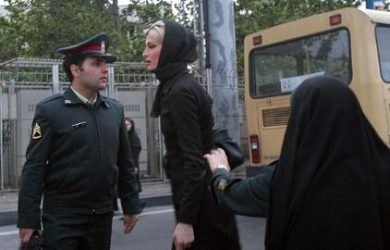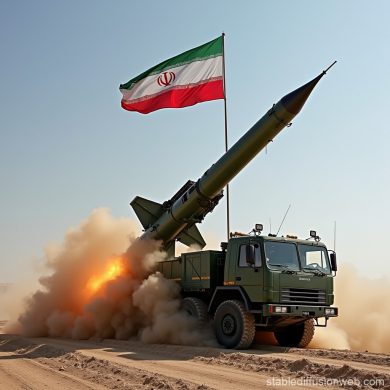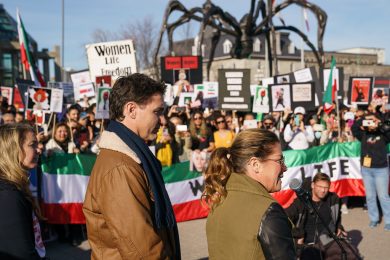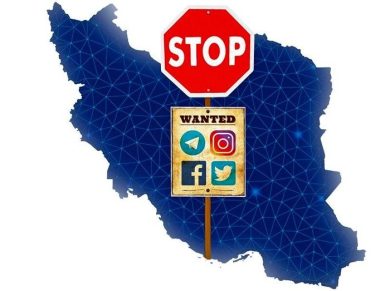Across Iran, young women are at the forefront of a historic revolution, leading protests, defying authoritarian rule, and challenging the IRGC’s oppressive grip. The Women, Life, Freedom movement, ignited by the death of Mahsa Amini in 2022, has empowered a new generation to take bold action against gender apartheid, state violence, and dictatorship.
This youth-led resistance is redefining Iran’s struggle for freedom, proving that young women are not just participants—they are leaders shaping the country’s future. From student activism and social media campaigns to street protests and digital resistance, their role is undeniable.
This article will explore:
• Why young women are leading Iran’s fight for freedom
• The tactics of repression used by the IRGC to silence them
• The digital revolution empowering their activism
• Stories of fearless young women risking everything for change
• The role of the international community in supporting their movement
1. Why Young Women Are Leading Iran’s Fight for Freedom
A. The New Face of Resistance
Iran’s youth, particularly young women, have grown up under a system of strict gender segregation, economic hardship, and political repression. However, rather than being silenced, they have become the loudest voices demanding change.
Key Reasons Behind Their Leadership:
• Personal Experience with Oppression:
• The mandatory hijab, lack of legal rights, and gender discrimination have made young women direct targets of the state’s authoritarian rule.
• Education and Awareness:
• Despite restrictions, Iranian women have achieved higher education rates than men in many fields, fueling their political consciousness.
• A Digital Generation:
• Unlike previous generations, today’s young activists have social media as a tool for mobilization and global awareness.
• No Fear of Consequences:
• Having grown up under an increasingly oppressive regime, many young women see no future under the current system, making them willing to risk everything for change.
B. The Role of Schools and Universities in Resistance
Universities and schools have become key battlegrounds in the fight against oppression.
• Students have removed their hijabs in defiance of the regime’s strict dress code.
• Campus protests have erupted across the country, with young women leading chants against the IRGC and government officials.
• Many female students have been arrested for distributing anti-regime materials or refusing to attend gender-segregated classes.
The government’s response? Violent crackdowns, expulsions, and arrests. But rather than instilling fear, these tactics have only strengthened young women’s resolve.
2. The IRGC’s Tactics of Repression Against Young Women
A. Arrests, Torture, and Intimidation
The IRGC and Basij forces have made young women the primary targets of their crackdown.
• Thousands of female students and activists have been arrested for protesting.
• Many have been beaten, sexually assaulted, and tortured in detention centers.
• Some have been forcibly disappeared, with their families receiving no information about their whereabouts.
One horrifying example is Nika Shakarami, a 16-year-old protester who disappeared during demonstrations. Days later, her brutalized body was returned to her family, a clear warning from the IRGC.
B. School and University Raids
• Security forces have raided schools, arresting teenage girls for their participation in protests.
• Reports have surfaced of chemical attacks on girls’ schools, believed to be an IRGC-backed tactic to scare female students from joining the movement.
• Parents of young activists have been threatened or arrested, putting entire families at risk.
But these tactics of terror have failed—Iran’s young women continue to rise, despite the dangers.
3. Digital Resistance: How Social Media Empowers Young Activists
While the IRGC controls Iran’s state-run media, young women have taken control of the narrative through digital platforms.
A. The Role of Social Media in Organizing Protests
• Twitter, Instagram, and Telegram have been key tools for coordinating protests, sharing footage of crackdowns, and exposing the IRGC’s brutality.
• Viral hashtags like #WomenLifeFreedom, #MahsaAmini, and #StopIRGC have brought global awareness to the movement.
• Exiled activists like Masih Alinejad use social media to amplify the voices of young Iranian women inside the country.
B. The IRGC’s Digital Crackdown
To counter this digital revolution, the IRGC has:
• Imposed internet blackouts to block protest coordination.
• Hacked activists’ social media accounts.
• Used AI surveillance tools to track and arrest protesters.
Despite this, young women continue to find ways to bypass censorship, proving that technology is on the side of freedom.
4. Stories of Young Women Leading the Movement
A. Hadis Najafi – The Face of Defiance
• At just 20 years old, Hadis joined the protests in Karaj, facing IRGC forces unarmed.
• She was shot multiple times and became a symbol of sacrifice for the revolution.
B. Armita Garavand – Another Mahsa Amini
• 16-year-old Armita was beaten into a coma by Tehran’s morality police for not wearing a hijab.
• The IRGC covered up her death, but her name remains a rallying cry for justice.
C. Young Women in Universities
• Female students have organized sit-ins, led boycotts of government-controlled universities, and continue to be arrested for dissent.
These women are not just victims—they are leaders who refuse to be silenced.
5. How the World Can Support Iran’s Young Women Activists
A. Hold the IRGC Accountable
• Governments worldwide must designate the IRGC as a terrorist organization, cutting off its funding.
• Human rights organizations must pressure Iran to release imprisoned activists.
B. Provide Digital and Technical Support
• Tech companies should provide VPNs and encryption tools to help activists bypass censorship.
• The international community should fund secure digital communication for Iranian activists.
C. Amplify Their Voices
• Media outlets must prioritize coverage of Iran’s youth-led movement.
• Social media users should share their stories, ensuring their fight stays visible.
Conclusion: The Future Belongs to Iran’s Young Women
Iran’s young women are not waiting for change—they are creating it. Their bravery in the face of IRGC repression proves that the future of Iran is female-led.
From schoolgirls protesting in classrooms to university students challenging state propaganda, their resistance is unstoppable.
The world must recognize that these young women are not just fighting for their rights—they are shaping the future of a free Iran.
Join Our Newsletter!
Stay informed with the latest updates, news, and ways to take action in the fight for justice and global security. Sign up now to get updates delivered straight to your inbox!





